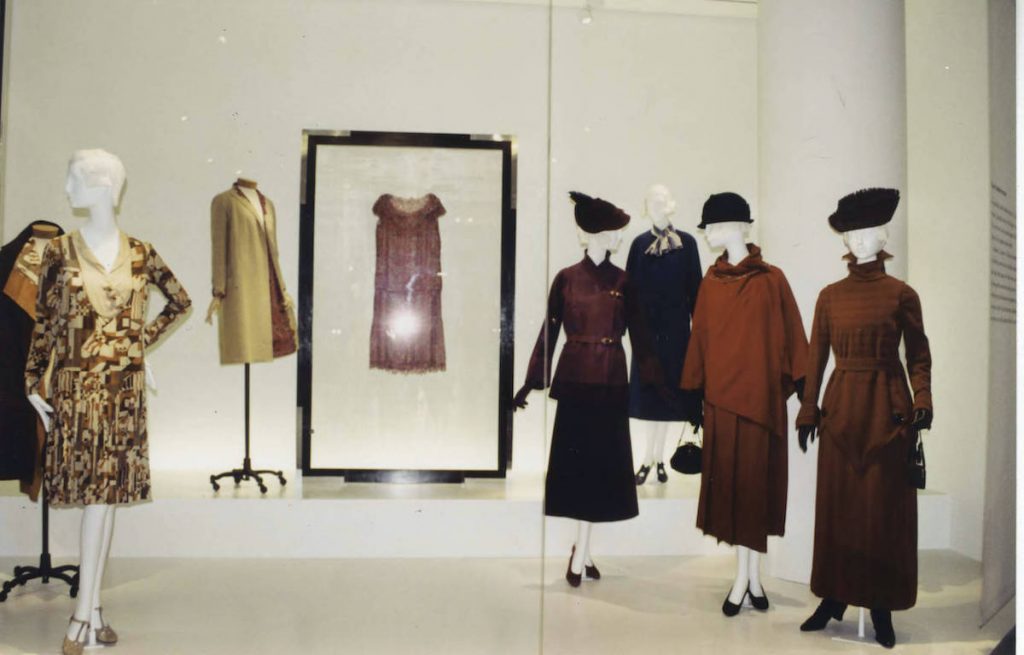Cubism and Fashion
Cubism and Fashion — an exhibition demonstrating how the fundamental traits of Cubism in art have been translated into fashion ~ will open in The Costume Institute of The Metropolitan Museum of Art on December 10, 1998. More than 40 examples on display will range from the beginnings of Cubism in 1908 to the present day. This landmark exhibition will be launched on the momentous occasion of the 50th anniversary of The Costume Institute Gala, known as the “Party of the Year.”
The Cubism and Fashion exhibition and Benefit for The Costume Institute are made possible by Prada.
The exhibition will explore the essential changes in fashion that occurred between 1908 and about 1925 and propose that Cubism, which transformed art so radically during that period, is also a prime cause of fashion’s modern forms. In examples ranging from the day ensemble with geometric pattern in shades of brown to the ivory silk panne velvet wedding dress from Madeleine Vionnet and an evening wrap coat in Art Deco skyscraper design, this extraordinary selection illustrates fashion’s inevitable recognition of the development of Cubism.
Richard Martin, Curator of The Costume Institute and organizer of Cubism and Fashion, writes in the accompanying book: “Cubism is incontestably broad-minded, inasmuch as like that later ‘ism,’ Surrealism, its reform was in large part about diminishing the privileges of painting and sculpture and honoring the values of the ordinary. It was almost inevitable that the planes, cylinders, mutable optics, and dynamic motion of Cubist art would engage fashion. Art historians have seen phenomena as diverse as air travel and the Theory of Relativity as akin — if not kin ~ to Cubism’s invention of a new way of seeing. In the search for a description of or analysis for fashion’s radical transformation, it becomes clear that Cubism possesses both the aesthetic proximity and the worldly diffusion to be not only metaphor but also cause.” Many of the most elegant dresses of the teens and twenties benefited from such properties of Cubism as planes, geometrical patterns, indeterminate forms, and collage. Designers from this period whose work will be included in the exhibition are Madeleine Vionnet, Callot Soeurs, Paul Poiret, Jacques Doucet, and Gabrielle Chanel.
The exhibition will also explore the ways in which the Cubists ~ especially Picasso, Braque, and Leger — have been a continuing inspiration to fashion designers including the Cubist vision’s continuing influence on fashion at the end of the 20th century.
In conjunction with the exhibition, a lecture on Cubism and Fashion will be given by Richard Martin on Thursday, January 21, at 6:00 p.m. in the Grace Rainey Rogers Auditorium. Tickets are $20 per person. A lecture on the exhibition by Richard Martin will take place on Sunday, February 28, at 3:00 p.m. and will be free with admission.
The book, Cubism and Fashion, published by The Metropolitan Museum of Art, is available in hardcover ($45.00) in the Museum’s bookshop. It is distributed by Harry N. Abrams, Inc. Exhibition design is by Michael Batista, Exhibition Designer, with graphic design by Jill Hammarberg, Graphic Designer, and lighting by Zack Zanolli, Lighting Designer.
Images courtesy of the Metropolitan Museum of Art





